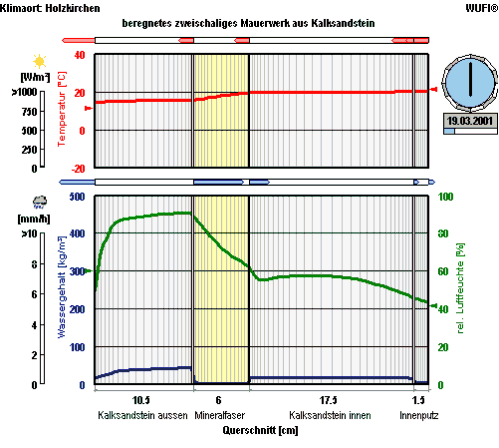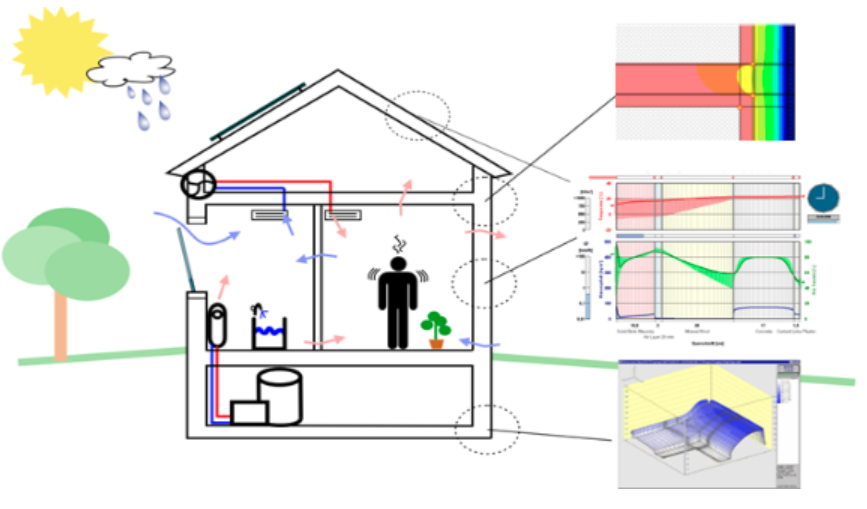Podcast: Play in new window | Download | Embed
Jesse Clarke is concerned with how to keep buildings dry so that they remain healthy, durable and energy efficient. Jesse is the Building Science Manager for Pro Clima Australia and Pro Clima NZ. He’s also an experienced advocate of WUFI® software.
If you don’t put the building products together properly, then you don’t manage the moisture in the construction properly, you end up with perverse health outcomes.
Building Science is the Future

Through his interest in sustainable design, Jesse discovered the importance of how building materials are put together. He leant a lot from studying building design and emerging science from Europe and North America.
Building science, says Jesse, is essentially the science of how to build durable, healthy, energy efficient buildings. And it’s the future!
Building Science is the science of how to build durable, healthy and energy efficient buildings.
Fabric First
To get in to the science of sustainable building, Jesse first studied solar photovoltaic technology. He says that solar panels are important, but they shouldn’t be used just to make a bad building, better. Good buildings are designed and constructed with a ‘fabric first’ approach. This ensures that they’ll perform well, be resilient and ultimately need much less power to run.
There are now plenty of other people looking after solar power. Jesse has turned his attention to learning, teaching and implementing the science of good building envelopes.
Airtightness is a Good Thing
Any discussion about good building envelopes should also include the topic of airtightness. Airtightness is a good thing. Having an airtight envelope helps the insulation to work properly and provides a lot more control over the health and comfort of the internal environment. A properly specified airtight vapour permeable membrane will also protect the structure of the building. Problems can occur if we create airtightness by accident without proper consideration of moisture movement, and this is where WUFI® can help out.
Hygrothermal Analysis
Analysing, measuring and managing heat flow through a building envelope is relatively easy. But the flow of heat is only part of the problem. We also need to understand and manage the flow of moisture
When moisture accumulates in our building structure, we have a problem. Hygrothermal analysis allows us to predict if moisture will accumulated and how long it’s likely to stay there.
WUFI®
WUFI® (which stands for Wärme Und Feuchte Instationär) means ‘heat and moisture transiency’. It was created by Prof. Dr. Hartwig Künzel and the team at the Fraunhofer Institute for Building Physics (IBP).
WUFI® is a suit of software for conducting hygrothermal analysis. Using WUFI® allows a skilled modeller to literally see what will happen inside a given building element, over time.

Using WUFI® to Keep Buildings Dry and Healthy
Nearly all building elements (roofs, walls, floors, window and door joints etc.) will leak at some point. Problems only occur when moisture gets in, and stays in. If moisture is allowed to accumulate for extended periods, then mould grows, timber rots and metal corrodes. Ultimately, people get sick and our buildings start to fail. This can be incredibly disruptive, stressful and expensive!
WUFI® was created to allow designers to check their designs before those designs become real buildings. By running scenarios with different combinations of products we can fail in the virtual world until we optimise the design. Then we can build with confidence that our real structure will stay dry, healthy and strong for decades.
Better Modelling in New Zealand and Australia
Currently there are only a few professionals in New Zealand and Australia who have heard of WUFI® or hygrothermal modelling. The good news is that we have some experts here and we can also quickly learn from overseas experience in this field.
We do have a few barriers to overcome. The first is getting the word out that such a thing as hygrothermal modelling exists.
Secondly, we need good, local data from product manufacturers and suppliers.
Then finally we need more design professionals to train up and become proficient in hygrothermal modelling and to start promoting this important service to clients.
Jump on the WUFI® Wagon!
To find out more, and to join the conversation, please come along to our introduction to WUFI® on October 17th 2018, 3 pm – 4:30 pm, followed by some networking at the pro clima HUB.
If you already know about WUFI®, please check out this session with WUFI® guru, Jesse Clarke who’s coming over from Sydney to run these sessions.
When buildings go wrong, it effects everyone. I hope you’ll be able to join us to discuss how we can use software and good design to create better buildings.

Leave a Reply